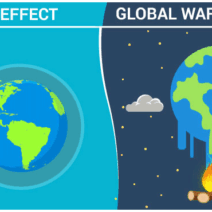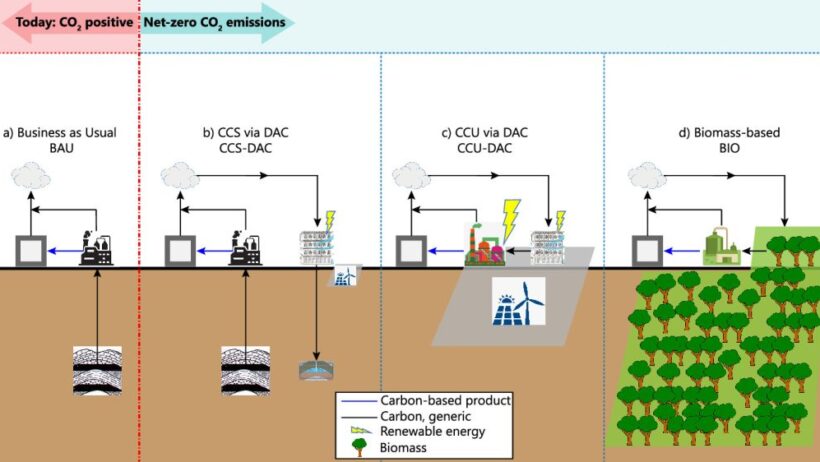Your carbon footprint encapsulates the total amount of greenhouse gases you expel into the atmosphere through daily activities. These emissions predominantly stem from the combustion of fossil fuels, agricultural practices, and manufacturing processes. Understanding this footprint is imperative for combating climate change, a phenomenon that threatens ecosystems and human livelihoods alike.
It is critical to dissect our day-to-day routines to ascertain areas ripe for improvement. The following segments will delve into various aspects of daily habits, revealing how seemingly innocuous actions can significantly affect our carbon emissions. A thorough examination yields insights into individual impact as well as collective potential for change.
1. Transportation: The Movement Dilemma
Transportation is a primary contributor to carbon footprints. Individual dependence on automobiles, particularly those powered by gasoline or diesel, yields substantial emissions. Each mile driven emits approximately 404 grams of CO2. Alternative modes of transportation present viable remedies. Biking, walking, or utilizing public transit can substantially mitigate one’s carbon output.
Moreover, for those who must drive, consider the implications of vehicle choice. Embracing electric vehicles (EVs) or hybrids can drastically curtail emissions. The shift towards eco-friendly vehicles not only lessens individual footprints but can also drive changes within the automotive industry towards more sustainable practices.
2. Energy Consumption: Powering Your Life
Residential energy consumption is another significant driver of carbon emissions. Heating, cooling, and electricity usage contribute to a substantial share of the overall footprint. Transitioning to energy-efficient appliances, utilizing smart home technologies, and optimizing insulation can culminate in considerable reductions in energy consumption.
Moreover, consider the energy source. Fossil fuel-based power plants discharge immense quantities of CO2. Conversely, harnessing renewable energy sources such as solar, wind, or hydroelectric power not only minimizes your carbon footprint but also supports a progressive shift towards sustainable energy production. Investment in such technologies fosters an environment conducive to combating climate change on a broader scale.
3. Diet and Food Waste: Nutritional Footprint
The food industry is intricately linked to carbon emissions, from agriculture to distribution. Livestock farming, particularly beef and dairy, generates copious amounts of methane, a potent greenhouse gas. Shifting towards a plant-based diet can lead to drastic emissions reductions; legumes, grains, and seasonal vegetables generally have a much lower carbon footprint.
Furthermore, consider the implications of food waste. Approximately one-third of all food produced is wasted, culminating in significant carbon emissions from the resources expended in its cultivation, processing, and transportation. Employing strategies to minimize waste, such as meal planning and composting, can ensure resources are used efficiently and sustainably.
4. Water Usage: An Underestimated Impact
Water consumption often goes unnoticed as a contributor to carbon footprints. The energy required to pump, heat, and treat water is substantial. Reducing water usage through efficient appliances, mindful habits, and rainwater harvesting not only conserves this essential resource but also decreases energy demand, mitigating related emissions.
Additionally, the relationship between water scarcity and climate change complicates this dynamic. As climate change exacerbates water shortages, the stresses on freshwater ecosystems rise, create a compelling narrative on the importance of conservation and sustainable practices within this realm.
5. Consumerism: The Cost of Indulgence
Modern consumer culture often promotes excessive consumption, leading to a higher carbon footprint. Products are manufactured globally, necessitating energy-intensive transportation and distribution processes. Thus, embracing minimalism and opting for second-hand or locally-sourced items can decrease the demand for new production, thereby reducing emissions related to manufacturing and shipping.
Furthermore, consider the lifespan of purchased goods. High-quality, durable items that resist the wear and tear often associated with fast fashion and disposable products can divert waste from landfills and reduce the frequency of purchases. Supporting sustainable brands that prioritize eco-friendly materials and ethical manufacturing practices can also promote a more conscious consumption model.
6. Advocacy and Community Engagement: Collective Action
While individual actions are crucial, collective engagement amplifies our capacity for change. Join forces with local environmental activism groups to advocate for policies aimed at reducing carbon emissions. Participate in community clean-up efforts or educational programs designed to raise awareness about climate change. The synergy of collective action can lead to invaluable changes at local and national levels.
Engagement also extends to urging local governments and businesses to embrace sustainable practices. By advocating for renewable energy projects, public transport improvements, and urban green spaces, you can catalyze greater momentum for environmental stewardship within your community and beyond.
Conclusion: Taking Steps Forward
Understanding your carbon footprint is the first step towards mitigating its impact on climate change. Through conscientious alterations to transportation, energy consumption, dietary choices, water usage, and consumer habits, individuals can significant reduce emissions. Advocating for collective action further enhances these efforts, demonstrating that change is achievable through united action. Every small step counts, accumulating into a collective movement that can combat climate change and promote a sustainable future.








